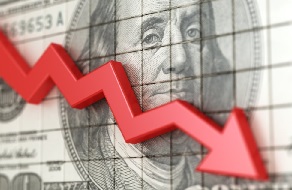The Hill: After the Gold Standard, We Got Bigger Government and a Smaller Dollar

Article By Robert Murphy in The Hill
August marks the 50th anniversary of Richard Nixon’s infamous decision to “close the gold window,” reneging on the U.S. government’s pledge to redeem dollars for gold.
To realize just how much governments have transformed their role in the people’s money, it is useful to explain how the system originally worked.
From the founding of the constitutional Republic through the eve of the Civil War in 1861, the federal government didn’t issue any legal-tender paper currency at all. Rather, for the official money, the federal government produced gold and silver coins stamped with various dollar denominations.
This is a critical distinction between the old and new ways: under Bretton Woods, the government “pegged” the dollar to gold (at $35 per ounce). U.S. authorities decided how many dollars they were going to print, and if they were too aggressive, then other central banks could turn in their dollars and eventually drain American vaults of the yellow metal. But before the Civil War, government officials weren’t in charge of picking the quantity of dollars at all. Rather, the public determined how many dollars were in circulation by presenting gold or silver to the government for minting as coins according to weights specified in law.
It was this faint remnant of the original gold standard that Nixon finally killed on Aug. 15, 1971, when he declared that not even central banks could redeem dollars for gold. With its shackles fully removed, the Federal Reserve opened the monetary spigot, causing the severe price inflation and economic turbulence that characterized the 1970s.
But as our historical sketch has shown, Nixon’s move was merely the final act in a long play; the hardness of the dollar had been gradually weakened from the Civil War onwards. And we can check the Bureau of Labor Statistics’ series on the purchasing power of the dollar in major cities to assess the outcome under the different frameworks.
From early 1922 through early 1929, during the “Roaring Twenties” before the great crash and Roosevelt’s Depression-era interventions, the purchasing power of the dollar was virtually unchanged, falling less than 1 percent cumulatively over the entire period. From early 1952 through early 1959, during the heyday of the Bretton Woods framework, the dollar lost a cumulative 9 percent of its purchasing power, about 1.2 percent per year. Yet from early 1972 through early 1979, in the wake of Nixon’s decision, the dollar lost a cumulative 40 percent of its value, or 7 percent per year.
Money matters, and the scope of government intervention affects the strength of the currency. Every increase in government power over .....
To read this article in The Hill 9in its entirety, click here.